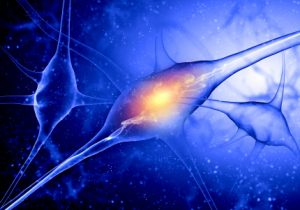Like in previous blogs, attending to the client, empathetically listening and observing, properly responding and encouraging are key elements in basic counseling. Like a coach training a player or athlete, challenging and encouraging a client to change is like coaching. It involves the counselor helping the client push forward, and like in coaching, this sometimes involves more than just challenging, but to also focus on the issue that needs addressed and then properly fix it. A good coach will focus and see a flaw in the mechanics of a player and then challenge and confront the player and help guide the player to fixing it. Counselors focus on the client’s story and then discover the core issues. After finding the core issues, they offer empathetic confrontations to help push forward. These skills represent later measures after basic attending, listening, observing and responding and look in later sessions to help the client find real and true change. In this blog, we will first look at focusing and then conclude with empathetic confrontation.
Focusing in Counseling
According to Ivey, the skill of focusing is a form of attending of the client that enables a counselor to discover multiple views of the client’s story (2018, p. 221). It helps the client think of new possibilities during the restory and call to action (Ivey, 2019, p. 221). A counselor goes well beyond merely the “I” in the story but looks to broaden the story beyond merely the client but into other aspects of the client’s life. How the counselor responds to the client hence can play a key role in where the story proceeds in the counseling sessions. Counselors who direct the conversation through selective attention skills can take the “I” conversation into other social and cultural spheres of the client. These other spheres of influence can be key clues into the client’s mindset. Ultimately, focusing is about helping the client address emotional issues. It is client based and humanistic in approach.

Ivey lists seven focus dimensions that counselors can utilize in responding and discussing issues. The first is to focus on the client him/herself. This involves direct questions regarding the client’s feelings. The second involves focusing on the theme . It involves asking the client about the issue itself and discovering details regarding the theme of the issue and how the client feels in the immediate moment. The third dimension shifts focus to others within the client’s life. It delves into questions about significant others, family members, friends or others involved in the issue. The fourth dimension of focusing looks at mutual aspects of how the client and counselor can work together. It emphasizes “we” and how the counselor and client can find ways to deal with the issue. The fifth dimension focuses on the counselor. It involves how the counselor can paraphrase and share appropriate and similar experiences with solutions. The sixth focus puts into perspective the issue in regards to the client’s cultural or environmental background and how they may play into the current issue. Finally, focusing on the here and now delves into identifying how the client feels at the moment itself (Ivey, 2018, p. 221).
Focusing on a client’s cultural/religious/ethnic background can play a key in discovering issues that exist in the person. It can help explain why a particular client responds and reacts a certain way. It can also be used to find strengths for the person. Ivey illustrates the importance of Community and Family Genograms that help map out the client’s background (2018, p.212). A good family genogram will help clients identify issues from a cultural standpoint and understand better their relationship to their surrounding environment and its stressors. In addition, it can also help clients discover new hidden strengths that exist within their family and culture. Helping the diverse client take pride in their past and heritage can help build resiliency. When stressors or issues occur, a client can utilize a term referred to as “body anchoring” where the client reflects upon a voice of a relative, famous individual, or cultural icon to help him/herself find confidence and strength to face the issue (Ivey, 2018, p. 220). This also helps multicultural clients have the power to name issues that are effecting them. Using focus on culture can be a very helpful tool when utilized correctly during a counsel session. This type of focusing helps many diverse populations deal more effectively against microaggressions (Ivey, 2018, p. 248).
Ways to help find a client’s particular cultural awareness during focusing is through the Cross five stage model, named after William Cross (Ivey, 2018, p. 244). Also referred to as the five stages of cultural identity, Cross identified how diverse populations recognize themselves and respond to confrontation. Focusing on the stage of a particular client hence can be very beneficial. The first stage involves the conformity stage. The individual may be unaware of racial identity and merely conforms to societal expectations. The second stage involves dissonance where the individual realizes that something does not match or fit. This can lead to self-appreciation or self doubt. The third stage results in resistance or emersion. An individual may become more angry at the injustice or immerse oneself more in one’s own culture. The fourth phase involves introspection where the individual sees oneself as an individual and part of the cultural group. The final phase of integrative awareness is the full sense of caring for oneself and one’s cultural heritage. This leads to appreciation and action but more so due to pride and awareness (Ivey, 2018, p. 245). Through identification of these phases or stages, counselors can help clients better utilize the client’s heritage and culture to empower the client in various interventions.
Empathetic Confrontation

A counselor, like a coach, uses a variety of encouragement and challenging strategies to help a client find change. Within the Problem Management Model, a client is shown the present, perceived view and ways to find the new view. This involves identifying internal as well as external conflicts. Sometimes, clients may become stuck in a way of thinking. They lack intentionality to change or lack creativity (Ivey, 2018, p. 229). Within this state, the client becomes immobile, experiences blocks, cannot achieve goals, lacks motivation and has reached an impasse (Ivey, 2018, p. 229). In these, cases, like a coach, the counselor needs to help the client face these issues and move forward. This involves a type of confrontation but this confrontation is not meant to imply aggression or hostile or argumentative behavior but is an engagement for change. According to Ivey, Carl Rogers pushed for the ideal of Empathetic Confrontation, which espouses a gentle listening to the client and then encouraging the client to examine oneself more fully (2018, p. 2029). Summaries are an excellent way to help confront a client with empathy. In this way, the counselor can present a two-part summary which states both positions with the connecting phrase “but on the other hand” (Ivey, 2018, p. 229-230). This presents both views of feelings and allows the client to digest the statement and see any discrepancies or issues of conflict within his/her logic.
Carl Rogers points out that even when presented in these terms, sometimes, the client may feel attacked or confronted. In these cases, he suggests to also hold tight to nonjudgmental attitudes, keeping one’s own beliefs to the side. Rogers emphasized that individuals with issues who come to counseling do not need judged or evaluated but guided (Ivey, 2018, p. 230). Within any issue, the counselor confronts but also supports. This involves first a relationship that must exist. Without a relationship of trust, the client will not accept any advice from a sterile stranger who he/she may merely see as a paid listener. When confronting, it is essential when summarizing to state the client’s point of view first, before comparing the opposing view. In addition, the client must remain in charge of outcomes. The counselor when confronting is not telling the client what to do but offering suggestions (Ivey, 2018, p. 232). In conclusion, the counselor must listen and observe for mixed messages and then respond with empathy in a summary that clarifies any internal or external issues. This should resolve with actions towards resolution of the issue (Ivey, 2018, p. 235).
Egan points out that are multiple ways to challenge and confront clients to life enhancing actions. Egan differentiates between goals but also strong intention and commitments to a course of action. The importance of understanding the value of action intentions is key in helping a client carry out a particular again (2019, p, 234-235). Implementing these instructions, with strong phrases such as “I strongly intend to do x when y occurs” can help clients find tools necessary to incorporate the necessary change (Egan, 2019, p. 235). Sometimes, a self contract to do a certain thing can be a powerful tool in helping clients galvanize towards change (Egan, 2019, p. 239).
Egan also points out that counselors need to help their clients overcome procrastination. Egan lists numerous excuses that can include competing daily agendas or short term pains (2019, p. 236). It is important to guide one’s client between conscious deliberation and procrastination that prevents true change.
Egan reminds counselors to also help clients identify unused resources that can help facilitate change. Replace “I can’t” with “I can” phrases by helping the client discover unused talents and resources to help one overcome negative thoughts of failure. (Egan, 2019, p.237).
When aiding clients with life enhancing actions, it is important to provide sometimes confirmatory feedback as well as corrective feedback. Obviously, confirmatory feedback acknowledges progress, but corrective feedback looks to help clients who wandered off from the course of action (Egan, 2019, p. 244). The spirit of empathy and nonjudgment are again essential in how this is accomplished. In many ways, it is confronting but in a non hostile way. Counselors can help clients stay on track through multiple ways via checklists, identification of possible obstacles and helping them identify damaging attitudes. Such attitudes can be due to a passivity not to take responsibility, a learned helplessness, disabling self talk, or disorganization (Egan, 2019, p. 245-248). Egan also warns that while helping clients, be aware of entropy and how initial change can gradually break down. Egan lists false hopes and the natural decay curve as two things that can occur in clients (2019, p.249-250). Within each, clients may have too high of expectations, or consider mistakes to destroy the entire process. Give clients the power to make mistakes throughout the process.
Sometimes, as noted, some clients are more resistant to confrontation and change. Some may become visibly upset if confronted with a discrepancy in life. Different clients respond to different challenges in different ways. The Client Change Scale or CCS is a way to measure a client’s reaction to empathetic confrontation (Ivey, 2018, p. 237). Level 1 involves denial of the issue. Within this level, the story is distorted and the client will look to blame others unfairly. Level 2 consists of bargaining and partial acceptance of the story. In this reality, the story is finally changing in a more true direction. Level 3 involves acceptance of the reality. The truth is recognized and the story is finally complete. Level 4 incorporates new solutions to make the story better and finally Level 5 refers to transcendence and the incorporation of the new story into the client’s life (Ivey, 2018, p. 246). The CCS helps the counselor track each session and see if progress or regression occurs from one session to the next in regards to change.
Egan points out that many individuals are reluctant to change due to variety of issues including fear of intensity of it, lack of trust in the process, extreme shame, loss of hope, or even the cost of the change itself (2019, p. 253-255). In dealing with these things, counselors need to be realistic and flexible and look to push the client beyond resistance by examining incentives of change (Egan, 2019, 259). In some cases, when change is identified and the need for it accepted, clients may need time in adjusting or implementing it. Egan points out that change can exist on two levels. He refers to these types of changes as first order changes and second order changes. First order change is operational and a short term solution, while second order change is more strategic and long term. Egan compares the two with first and second as being compared in these ways. First order utilizes adjustments to the current situation, while second is systematic, first monitors, while second creates new, first creates temporary, while second creates to endure. First changes look sometimes to deal with the symptoms while second attacks the causes (Egan, 2019, p. 308).
In some clients, the situation to change may not permit a new paradigm but may requires coping skills. For instance, a stressed employee may be forced to keep a stressful job but may need to tinker with it due to the financial a loss of finding a new job would incur with a more lasting change, while a battered spouse would require a permanent change and would not be able to cope with the existing abuse.
An interesting model is the GROW model. John Whitmore, creator of the model utilized the acronym to produce change and to assess one’s willingness to change. G represents goal or what one wishes to accomplish. R stands for reality and where the client currently exists. O stands for options and what one can possibly do. Finally W stands for will, or what one is willing to do.
This model as well the Problem Management Model are ways to help move the sessions and help identify issues and assess how to empathetically confront and challenge individuals to productive change.
Conclusion
How a counselor attends to a client also involves sometimes more than listening but also focusing on particular aspects of the client’s life. This involves the other aspects of the clients life and in many cases includes cultural and social issues that affect the client. This can be merely family but also take upon the broader cultural aspect of a person. Someone of European descent may react quite differently than someone of Asian descent to the same issue. Hence focusing in on these issues is an essential attending skill. It is also important to understand where one cultural exists within oneself. The Cross model can help counselors better gauge one’s cultural awareness and how that plays in one’s particular situation.

In addition, this blog discussed the importance of Empathetic Confrontation. Carl Rogers understood the importance of helping individuals identify problems that were internal or external but he also understood that is was critical to approach confrontation with nonjudgment and empathy. Employing a two part summary with “on the other hand” can help expose issues and offer good solutions but different individuals react to confrontation to change differently. The Client Change Scale is an excellent way to gauge and monitor a client’s willingness to change. Through Empathetic Confrontation, the counselor looks to challenge past themes or schemas of a client’s life and help them find new ways to correct negative behaviors.
Please also review AIHCP’s many mental health certification programs. AIHCP offers a Grief Counseling Certification, as well as a Christian Counseling Certification. In addition, AIHCP offers programs in Crisis Intervention, Healthcare Life Coaching, Stress Management and Anger Management Consulting. The programs are online and independent study and open to qualified professionals seeking a four year certification.
Reference
Ivey, A. et, al. “Intentional Interviewing and Counseling: Facilitating Client Development in a Multicultural Society” (9th Ed( (2018). Cengage.
Additional Resources
Williams, M. (2018). “Ethnic and Racial Identity and the Therapeutic Alliance”. Psychology Today. Access here
Sutton, J. (2022). “How to Assess and Improve Readiness for Change”, PositivePsychology.com. Access here
“Focusing” (2016). Good Therapy. Access here
“The Technique of Confrontation in Counseling” (2022). Optimist Minds. Access here























